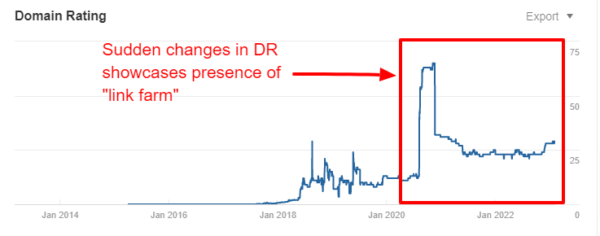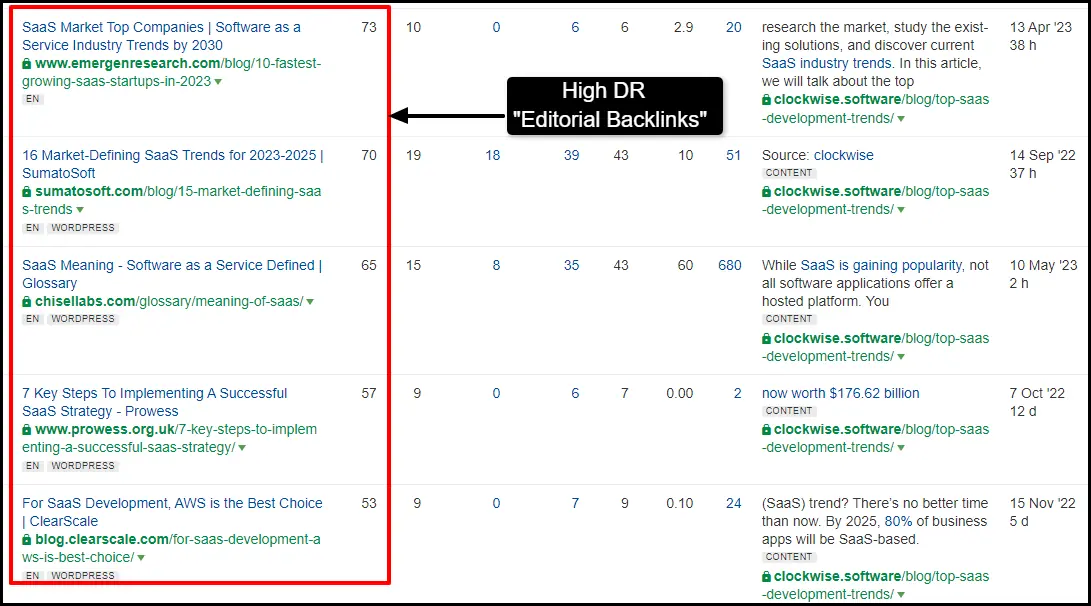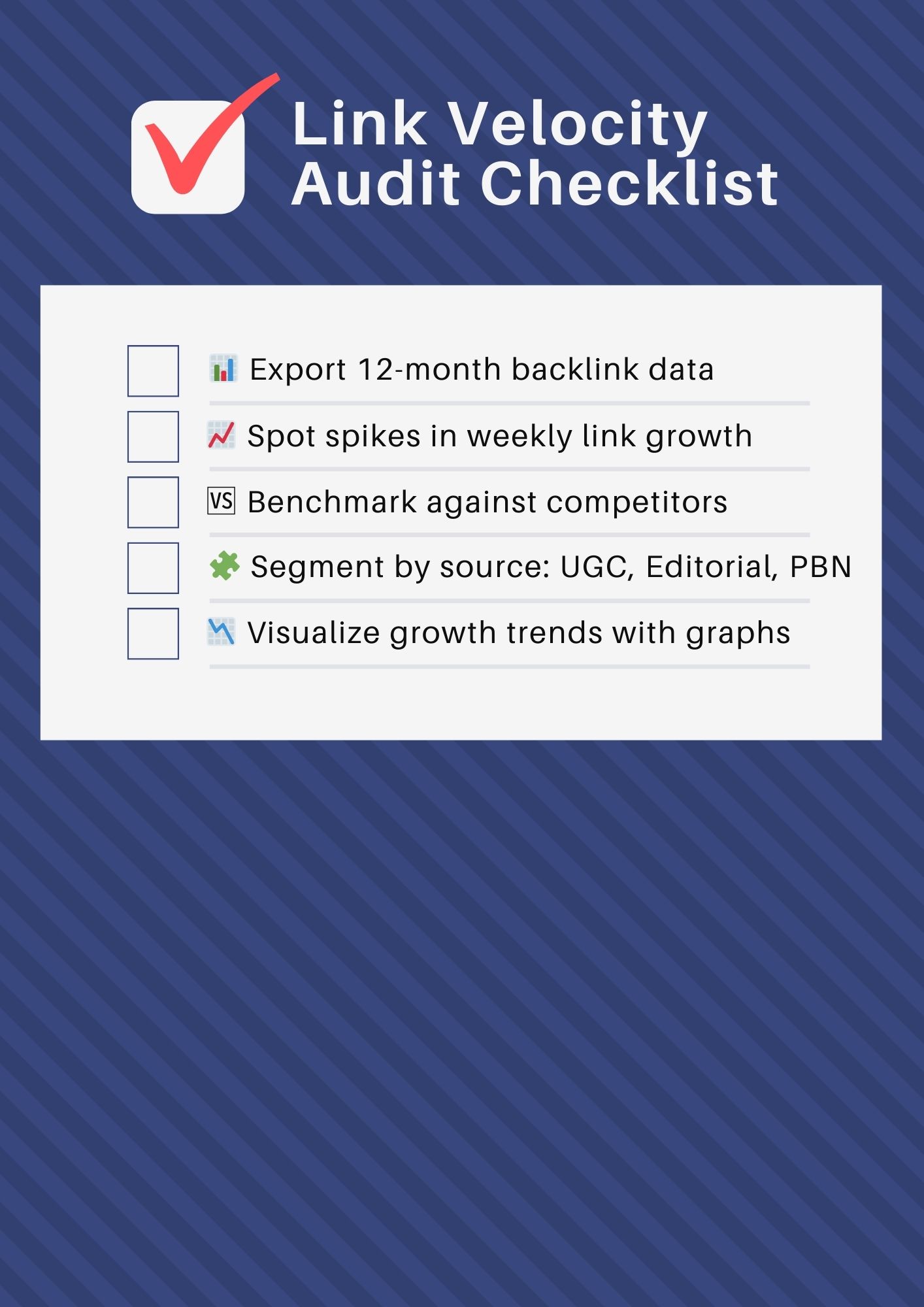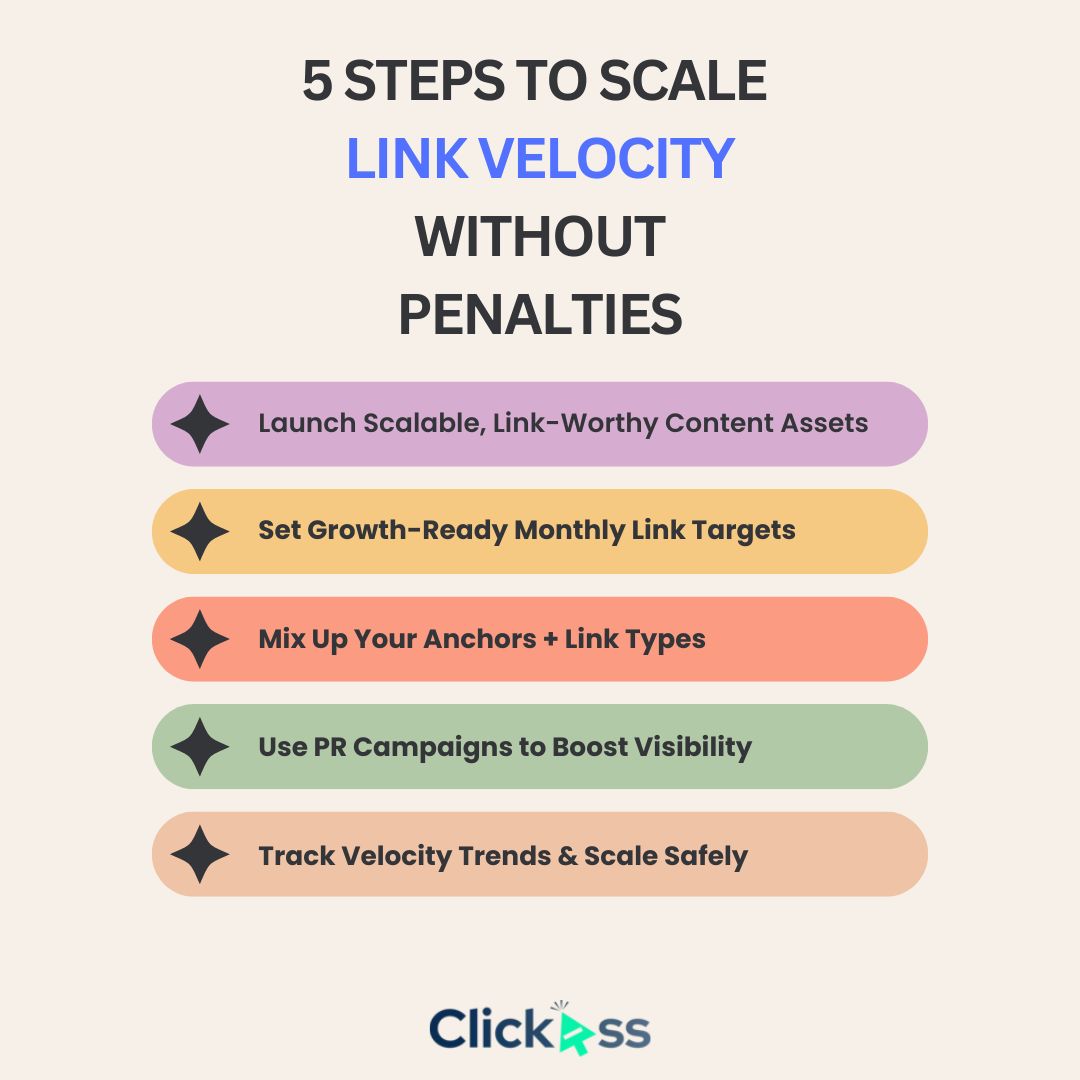
SaaS Link Building Playbook for Faster SEO Wins
Learn proven SaaS link building tactics to rank faster, boost DR, and drive signups with high-quality backlinks.
Link velocity sounds technical, but it’s one of the simplest—and most critical—SEO metrics to understand.
If you’re building backlinks for your SaaS or B2C brand, knowing how fast you earn those links could mean the difference between a ranking boost and a penalty.

Link velocity is the speed at which your website gains new backlinks over a given time period.
Search engines like Google use this rate to assess whether your link profile is growing naturally or suspiciously fast.
A steady increase in backlinks shows that people are finding and referencing your content over time.

But a sudden spike—without context—might signal manipulation.

Example:
You launch a SaaS onboarding guide and get 30 backlinks over 6 weeks via guest posts and forums.
Link velocity became a hot topic in early SEO circles when Google began cracking down on link schemes.
Marketers noticed that even “good” backlinks could lead to penalties if acquired too quickly.
The term helped SEOs frame the idea that it’s not just the quality of links that matters—but also the pace.
Example:
An ecommerce store gained 100 backlinks in 3 days from niche directories, which later triggered a spam flag.
Link growth is about volume—how many links your site earns overall.
Link velocity is about timing—how quickly those links are acquired within specific intervals (daily, weekly, monthly).
You could have excellent link growth and still get penalized if the velocity looks unnatural.
Sustainable link velocity aligns with organic content discovery and brand visibility.
Example:
Your product-led SEO agency gets 10–15 new backlinks monthly through consistent content and HARO features.
Google treats link velocity as a behavioral signal.
If your backlink profile grows at a pace that mirrors your content’s exposure, it’s seen as natural.
But sudden link spikes—especially without any newsworthy or shareable content—can raise red flags.
It often suggests paid links, automation, or PBNs.
Example:
You published a SaaS feature page that got 70 links in 3 days with no PR or launch—suspicious.
Slow, steady velocity—especially with high editorial diversity—is a sign of trustworthiness.

Google’s algorithm prefers “organic signals” over aggressive backlink campaigns.
Natural growth follows a pattern: a blog post gains traction → people link → links spread. Unnatural growth skips that process and often comes from link buying or mass submission.
Watch for patterns in anchor text, link origin, and domain diversity.
Too many similar links from low-authority sites is a giveaway.
Example:
Your D2C skincare blog earned links from 20 niche blogs over 5 weeks—organic and believable.
Consistent, believable link velocity builds Google’s trust in your domain. It tells algorithms that your content is gaining recognition at a realistic pace.
This compounds over time—your site gets crawled more often and indexed faster.
Example:
Your SaaS blog saw a DA increase from 24 to 42 after maintaining steady velocity for 6 months.
Track new backlinks on a weekly or monthly basis using tools like Ahrefs, SEMrush, or Google Search Console.
Set a benchmark for your current rate of growth, then compare it over time.
This gives you clarity on whether your link-building is progressing naturally—or veering into risky territory.
Example:
You notice your SaaS blog averages 12 new links per month, with small weekly gains.
Visual graphs help you spot link growth patterns. A smooth, upward slope shows consistent outreach and engagement. Sharp spikes followed by flat lines? That’s unnatural.
Tools like Linkody or Monitor Backlinks make trend spotting simple, especially when you compare competitors side-by-side.
Example:
Your dashboard shows a one-day spike of 60 links—turned out to be scraped blog content.
To measure velocity, divide total new links by time (weeks/months). Track this number over 3–6 month periods to detect shifts in pace.
Add competitor velocity for context—you don’t have to be fastest, just consistent and cleaner.
Example:
A B2C health brand averages 20 backlinks/month, increasing steadily after influencer outreach.

If your site is new, slow and steady is the rule.
Start by earning 5–10 high-quality backlinks per month through guest posts, founder outreach, and earned mentions.
Google expects modest growth early on. You don’t need volume—you need relevance and consistency.
Build topical authority before trying to scale aggressively.
Older domains (1.5+ years) can handle a higher backlink intake.
If you’ve already built up authority, 20–40 backlinks/month from diverse, editorial sources is a healthy range.
Velocity should align with your content publishing rate, campaign visibility, and niche demand. Spikes from launches or PR are fine—as long as they’re backed by real visibility.
Massive link jumps—especially from low-DR, irrelevant, or duplicate sources—will get flagged fast. Anchor text over-optimization or sudden surges in exact-match links also sets off alarms.
Avoid Fiverr gigs, forum drops, and PBN bundles—short-term gains, long-term losses.
Example:
A startup bought 100 links for a product page; rankings disappeared in 10 days after Google’s next crawl. Even aged domains aren’t immune—velocity still needs a story behind it.
One of the most common link velocity traps is overloading your site with purchased backlinks too fast.
Even if they’re from high-DR domains, Google spots sudden spikes without context and reacts accordingly. Fast doesn’t equal effective—especially if there’s no content push or visibility to justify the volume.
Links from irrelevant sources won’t help your rankings—and in bulk, they can hurt them.
If your SaaS blog earns backlinks from unrelated lifestyle or gambling sites, velocity becomes meaningless.
Google evaluates link context, anchor diversity, and page relevance—not just domain authority.
Example:
A B2C wellness brand gained 40 backlinks from crypto blogs; rankings dropped despite a positive velocity curve.
Tools that promise hundreds of links with no manual effort often flood your site with low-value, duplicate content links.
This may give the illusion of growth—but it’s unsustainable and risky.
Manual outreach, editorial placements, and authentic PR take more time—but they align with Google’s expectations.
Automate reporting, not relationships.
Link velocity isn’t about chasing backlink numbers—it’s about earning them at a rate that matches your brand’s visibility.
Google expects growth patterns to align with user interest, PR cycles, or product momentum.
Build too fast without support? You risk algorithmic suspicion. Grow gradually, tied to actual demand? You earn trust, rankings, and domain authority.
Let’s break down the strategy:

Think beyond blog posts—create teardown reports, free tools, original data, or expert roundups.
The more valuable the asset, the more naturally people will link to it over time.
Pro Tip: Align the asset with a seasonal or industry trend to maximize visibility in a short time.
Start with modest targets: 5–10 backlinks/month for new sites, 20–40 for aged domains. These should be links you can earn through strategic outreach, not mass submissions.
Avoid link blasts or trying to “catch up” velocity with one big push.
Mix branded terms, partial-match keywords, and generic anchors.
Use different link types: guest posts, digital PR, mentions, resource links, and even social embeds.
Use campaigns like product updates, founder interviews, or funding news to justify a short-term velocity spike.
This gives Google a reason to expect link surges during high-visibility windows.
Use Ahrefs and SEMrush weekly to spot trends. If you’re seeing unusual surges without any visibility push, audit sources or hit pause.
Example:
A wellness SaaS launched a sleep calculator tool and gained 50 backlinks in 4 weeks—then let organic velocity take over post-launch.
Google’s algorithms are built to detect behavioral patterns—if your link growth mimics natural discovery, you’ll gain steady ranking traction.
Consistent link velocity signals authority, relevance, and brand interest. In contrast, erratic surges often resemble manipulation.
Instead of chasing short-term boosts, focus on sustainable momentum that can support long-term SEO gains.
Pacing matters. Slow, deliberate link velocity helps you rank higher and stay there—without risking penalties.
Ahrefs is a go-to for tracking new and lost backlinks on a weekly basis.
Their “Referring Domains” and “New & Lost Links” graphs visualize velocity trends, helping you spot surges, drops, or unnatural patterns.
You can also filter by DR, anchor text, and link type to segment your growth more effectively.
SEMrush gives you trend visualizations along with alerts for sudden spikes or link loss.
The “Backlink Audit” tool is especially useful for identifying toxic velocity caused by spammy domains. You can even monitor competitors to understand their link velocity curve and compare it with your own.
While not as visual, GSC helps validate link data from Google’s perspective.
It allows you to track cumulative link volume, top linking sites, and anchor diversity over time.
Example:
You spotted a weekly spike in Ahrefs but saw only a gradual increase in GSC—confirming it was scraper noise, not real growth.
When combined, these three tools give you a well-rounded view of link velocity—both from Google’s eyes and real-time crawlers.
Link velocity isn’t about how many backlinks you can get—it’s about how consistently and naturally they appear.
The fastest way to lose rankings is to rush link building without context, content, or brand visibility.
Google’s algorithm favors brands that earn links over time from real sources.
A healthy velocity signals quality, trust, and engagement—not manipulation. Think of link velocity like muscle growth: overtraining causes injury; steady effort builds long-term strength.
Example:
Your SaaS competitor earned 100 links in 2 weeks—then dropped off Page 1 due to over-optimization.

Learn proven SaaS link building tactics to rank faster, boost DR, and drive signups with high-quality backlinks.

Learn how to pick a trusted white label link partner for your SaaS agency. Avoid spammy links and scale SEO growth.

Uncover the real value of forum backlinks in 2025—learn smart strategies, avoid risks, and build SEO trust effectively.
